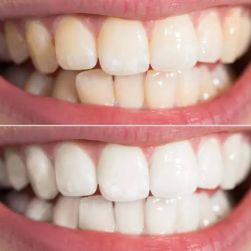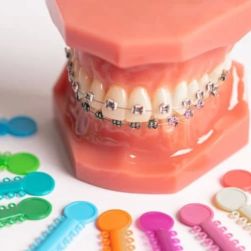Finding the Right Dentist That Accepts Your Insurance Plan
Finding a dentist who accepts your insurance can be a bit of a headache, but trust me, it’s worth the effort. A few years ago, I was in a similar situation. I had just moved to a new city, and I needed to find a dentist who could take my insurance, which was a bit tricky. Like many people, I wanted affordable care without compromising on quality. After doing some research and learning along the way, I’m here to share the insights and steps that helped me, and I’m confident these will help you too.
1. Understand Your Insurance Coverage
The first step in finding a dentist that accepts insurance is to understand your own insurance coverage. If you have dental insurance, your provider likely has a list of preferred dentists or networks that they partner with. This is where the search begins. Knowing what kind of coverage you have—whether it’s PPO (Preferred Provider Organization), HMO (Health Maintenance Organization), or another type—can greatly affect the number of available options for you. If you aren’t sure about the details, don’t hesitate to contact your insurance provider and request clarification on the network of dentists they work with.
For instance, when I was looking for a dentist, I learned that my PPO plan had a broader network of dentists, allowing me to choose from a larger pool of providers, though I had to pay a bit more if I went out-of-network. In contrast, an HMO plan typically has a more restricted list of in-network providers, but it also comes with a lower monthly premium and fewer out-of-pocket costs.
2. Use Your Insurance Provider's Dentist Directory
Most insurance providers offer online tools or directories to help you find a dentist who accepts your insurance. These directories are often available on the insurance provider’s website and allow you to filter by location, specialty, and other preferences like language spoken or office hours. This was incredibly helpful for me when I was narrowing down my options. I could easily search for local dentists, read reviews, and even check if they accepted my insurance.
It’s a good idea to use this resource because it’s tailored specifically to your insurance plan. Even though other online directories can be helpful, they may not always reflect the most current information regarding what insurance a dentist accepts. I found that using my insurance provider’s directory saved me time and effort, as it gave me a list of dentists I could immediately start contacting.
3. Call and Confirm the Insurance Acceptance
Once you have a list of potential dentists, it’s crucial to call and verify that they accept your specific insurance plan. While directories and websites are helpful, they don’t always provide real-time updates. I ran into a situation where a dentist on my insurance provider’s directory no longer accepted my insurance, so calling ahead is always a good idea. Simply explain your insurance plan and ask if they accept it. You should also ask if there are any restrictions or limitations for using insurance at their office, such as waiting periods or specific coverage details.
Additionally, don’t forget to ask if there are any out-of-pocket expenses or co-pays associated with visits. Some dental offices may accept your insurance but charge higher co-pays, which can affect your overall out-of-pocket costs. This extra step helps avoid unexpected surprises when you receive your bill.
4. Consider Online Reviews and Recommendations
Choosing a dentist is a very personal decision, and it’s important to find one who makes you feel comfortable and provides the care you need. This is where online reviews and personal recommendations come into play. Many websites like Yelp, Google Reviews, or even social media can give you insight into the experience of other patients.
When I was searching for a dentist, I found it extremely useful to read reviews from others who had similar experiences with insurance. Reviews can give you an idea of how well the office handles insurance paperwork, whether they’re transparent about costs, and how easy it is to make an appointment or get help with billing issues. It also helps to ask friends, family, or co-workers for recommendations—they may already have experience with a dentist who accepts your insurance.
5. Look for Dental Offices That Offer Payment Plans
Even with dental insurance, sometimes the coverage doesn’t fully cover all expenses. In these situations, it’s helpful to look for dental offices that offer payment plans or financing options. Some dentists offer in-house financing, while others may work with third-party financing companies like CareCredit.
When I was looking for a dentist, I came across a couple of offices that offered affordable monthly payment plans for treatments that weren’t fully covered by insurance. This gave me peace of mind knowing that I wouldn’t have to pay everything upfront, making my dental care more manageable financially. Always ask about payment options during your initial phone call to avoid any confusion later on.
6. Visit the Dentist for a Consultation
Once you’ve found a dentist that accepts your insurance and meets your other criteria, it’s a good idea to schedule a consultation. This gives you a chance to meet the dentist and staff, tour the office, and get a feel for the atmosphere. During the consultation, you can discuss your insurance coverage in detail, confirm the costs, and ask any remaining questions you might have about your treatment plan or potential dental procedures.
This step is particularly helpful if you’re new to the area or don’t have a personal recommendation from someone you trust. I found that after my consultation, I was much more comfortable and confident in my choice. The dentist was happy to explain their insurance policies, and I felt reassured about the quality of care I would be receiving.
7. Be Prepared to Make Adjustments If Necessary
Sometimes, despite your best efforts, things don’t go as planned. You might find that your first choice of dentist doesn’t fully meet your expectations, or they may no longer accept your insurance after a while. In such cases, it’s important to stay flexible and be prepared to make changes if needed. It’s not uncommon for insurance networks to change, or for practices to update their policies.
If this happens to you, don’t panic. Just revisit the steps above—contact your insurance provider again, look for alternative providers, and check reviews. This is how I ended up finding a better-suited dentist who met all my needs. Sometimes, a small setback leads you to even better options!






